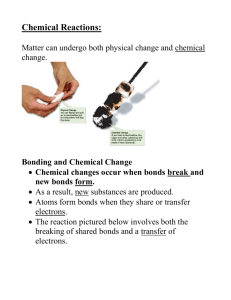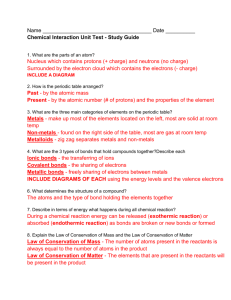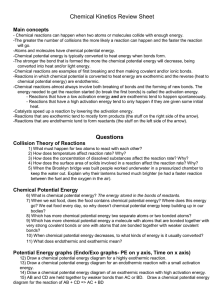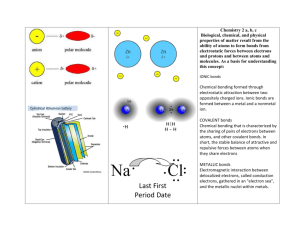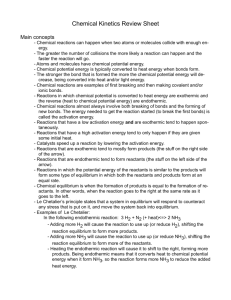Name
advertisement
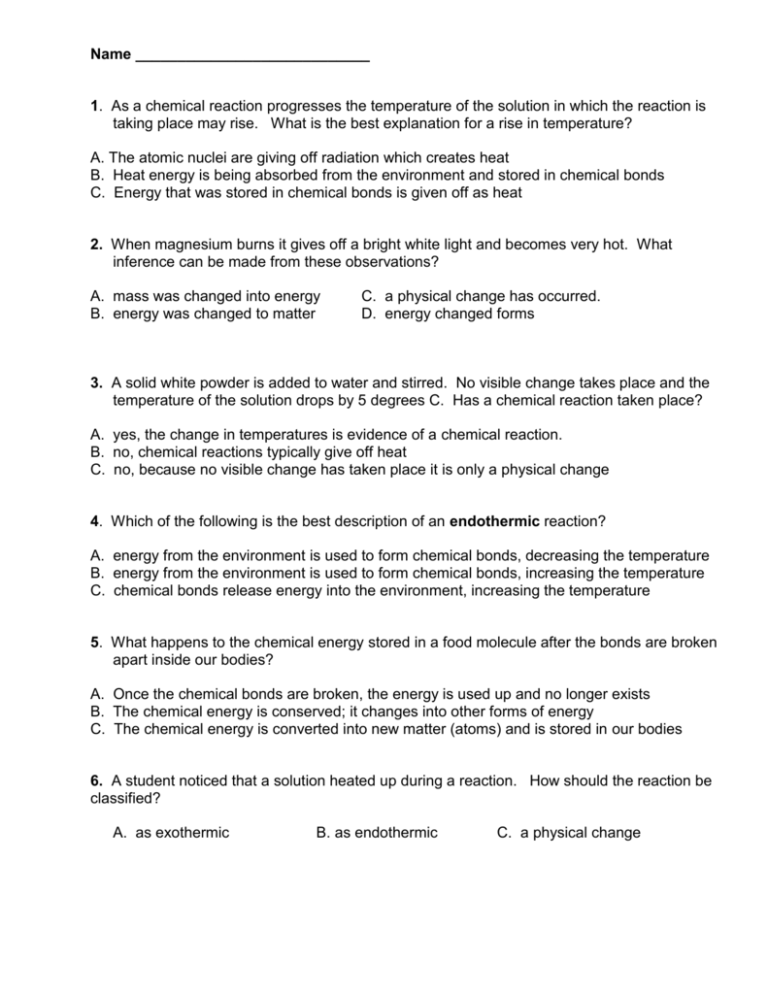
Name ____________________________ 1. As a chemical reaction progresses the temperature of the solution in which the reaction is taking place may rise. What is the best explanation for a rise in temperature? A. The atomic nuclei are giving off radiation which creates heat B. Heat energy is being absorbed from the environment and stored in chemical bonds C. Energy that was stored in chemical bonds is given off as heat 2. When magnesium burns it gives off a bright white light and becomes very hot. What inference can be made from these observations? A. mass was changed into energy B. energy was changed to matter C. a physical change has occurred. D. energy changed forms 3. A solid white powder is added to water and stirred. No visible change takes place and the temperature of the solution drops by 5 degrees C. Has a chemical reaction taken place? A. yes, the change in temperatures is evidence of a chemical reaction. B. no, chemical reactions typically give off heat C. no, because no visible change has taken place it is only a physical change 4. Which of the following is the best description of an endothermic reaction? A. energy from the environment is used to form chemical bonds, decreasing the temperature B. energy from the environment is used to form chemical bonds, increasing the temperature C. chemical bonds release energy into the environment, increasing the temperature 5. What happens to the chemical energy stored in a food molecule after the bonds are broken apart inside our bodies? A. Once the chemical bonds are broken, the energy is used up and no longer exists B. The chemical energy is conserved; it changes into other forms of energy C. The chemical energy is converted into new matter (atoms) and is stored in our bodies 6. A student noticed that a solution heated up during a reaction. How should the reaction be classified? A. as exothermic B. as endothermic C. a physical change 7. How is energy produced to light the bulb? A. electrons travel through the wire from the zinc to the copper B. zinc atoms travel through the wire to the copper electrode C. heat energy produced by the chemical reaction travels through the wire D. Cu2+ ions traveling through the wire create electricity 8. What must be true of the two metal electrodes in an electrochemical cell (a battery)? A. B. C. D. one must be a solid, one must be a liquid one must be an alkali metal, one must be a transition metal one must be a metalloid (semiconductor), one must be a metal one must donate electrons, one must accept electrons 9. How would the following reaction be described? 2H2 + O2 2H2O + 483.6 kJ A. endothermic B. exothermic 10. How would the following reaction be described? 2H2O + 483.6 kJ 2H2 + O2 11. A. endothermic B. exothermic In a chemical compound, such as dynamite, where does the energy come from to blow stuff up? a. from inside the nuclei of the atoms making up the compound b. from the bonds holding the atoms together in the compound c. from atoms in the compound being changed into heat, light, sound, and motion energy 12. What is the difference between a nuclear reaction and a chemical reaction?




